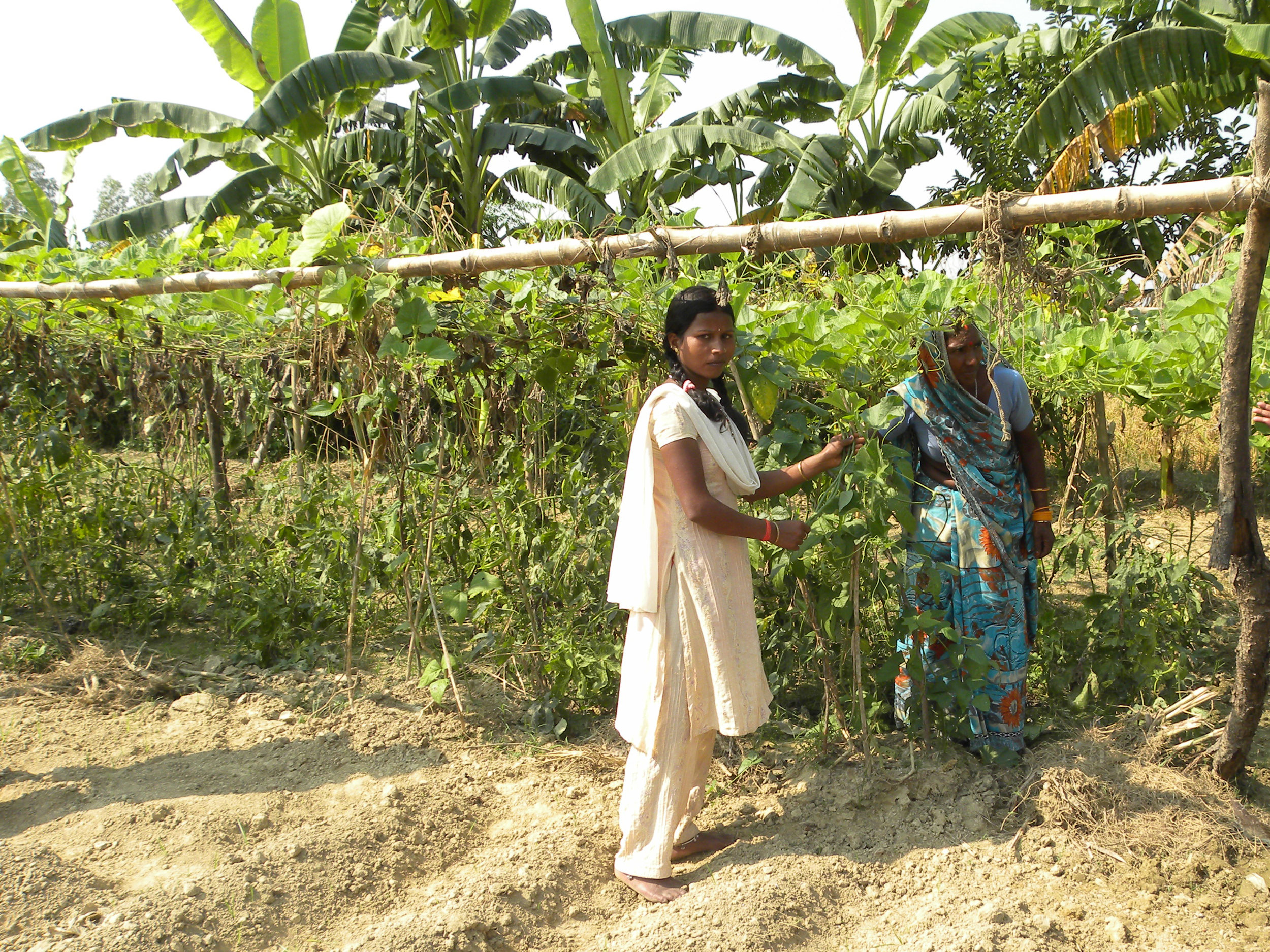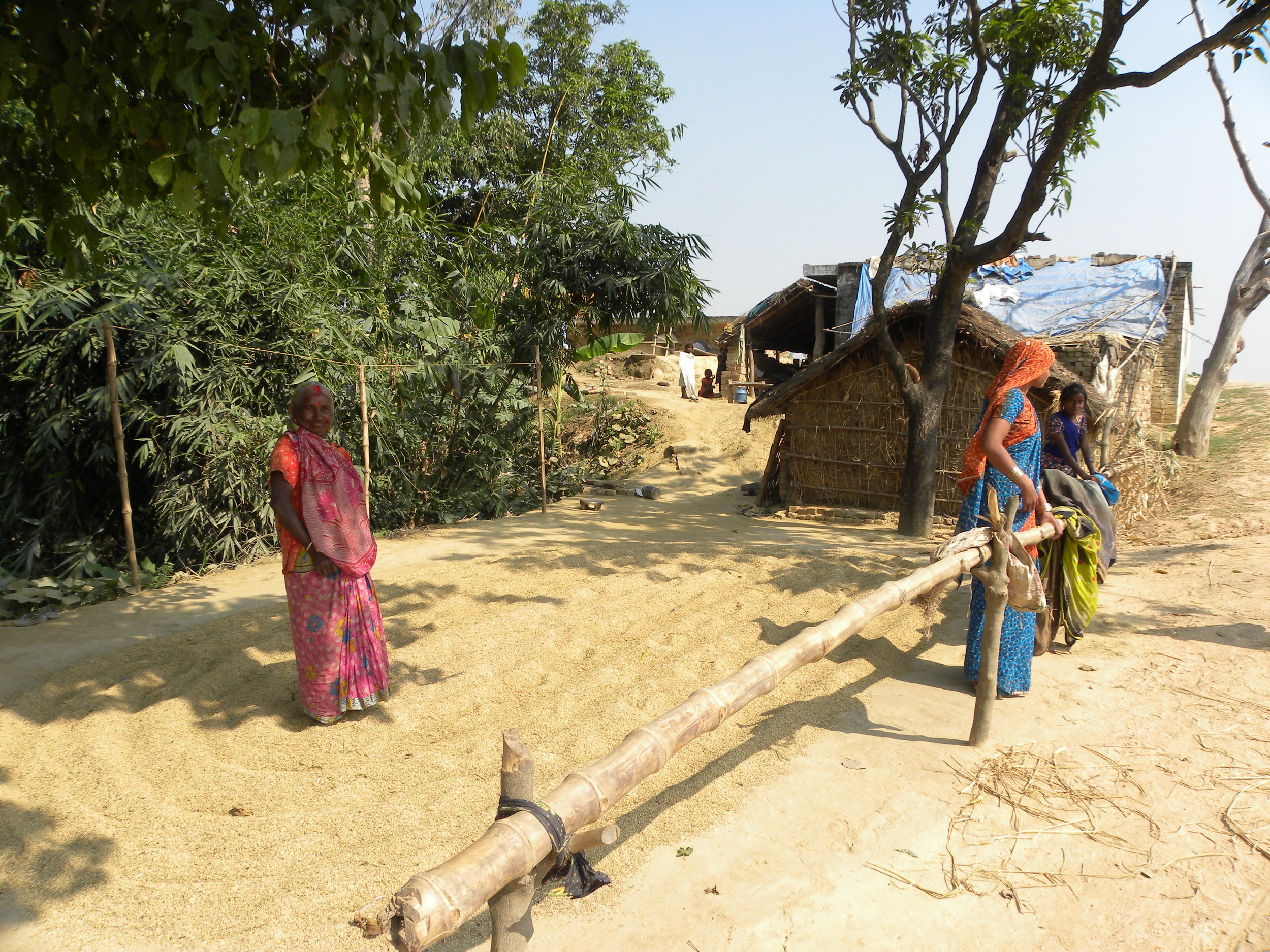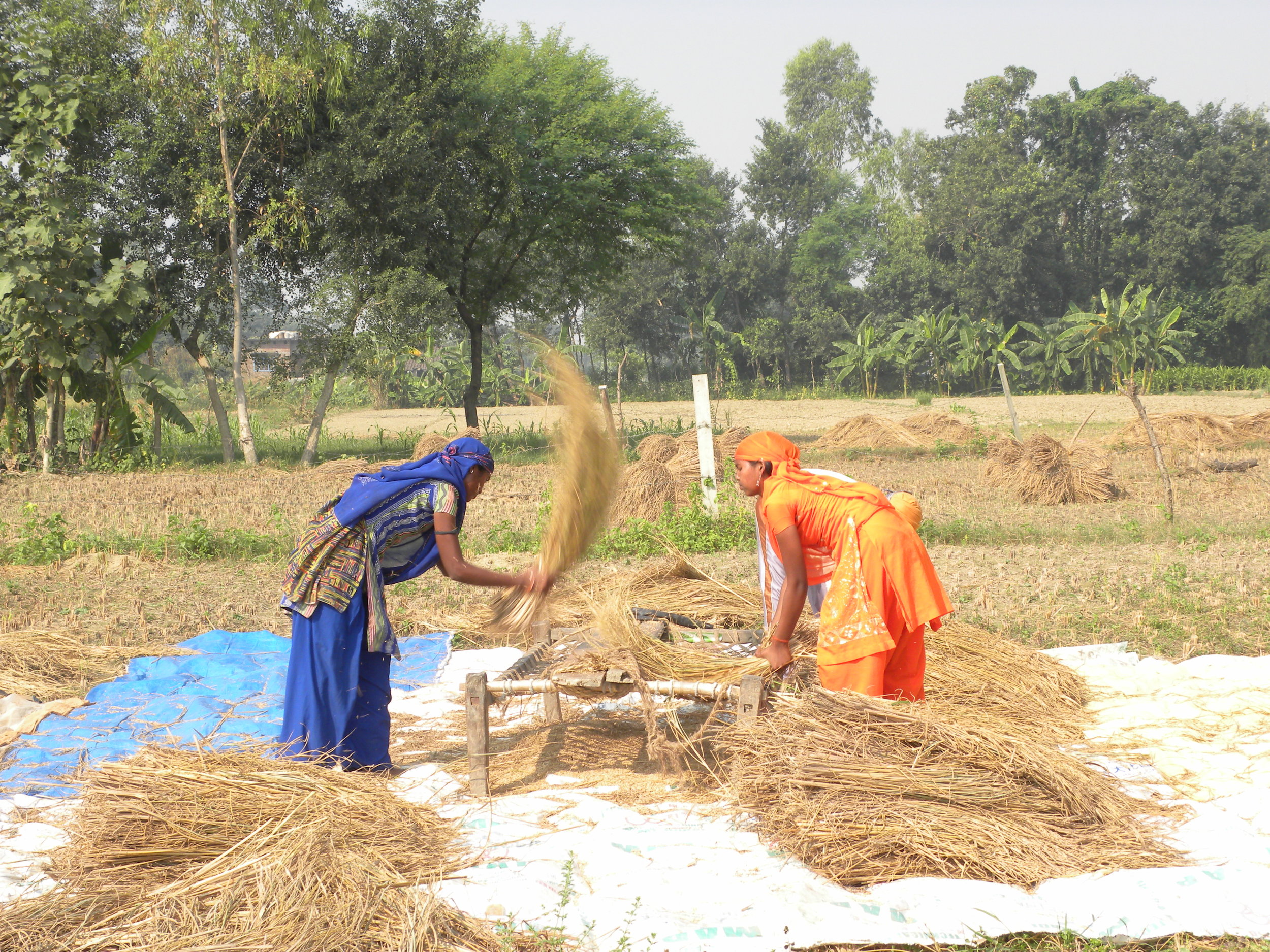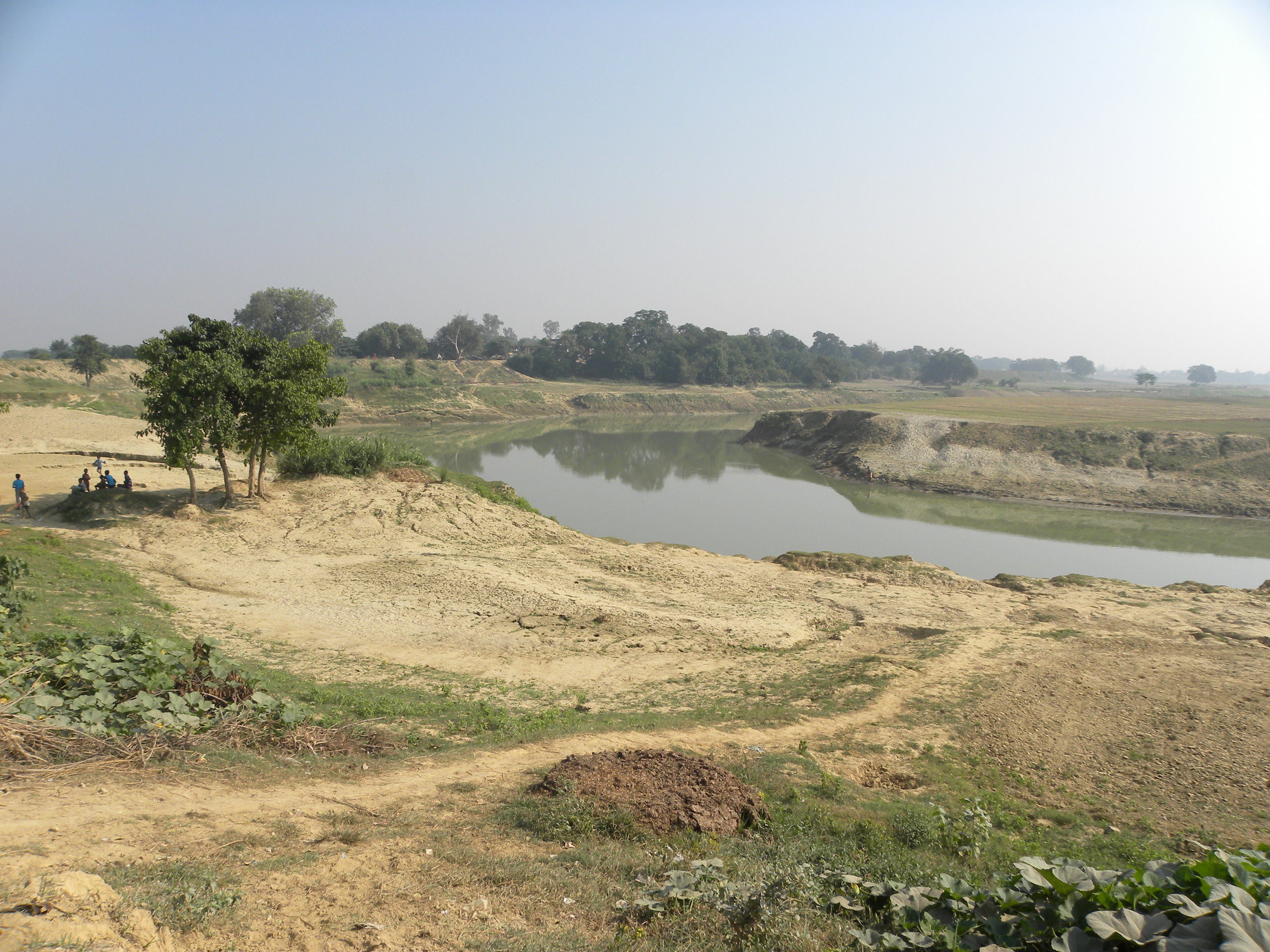Women Farmers in India Adopt New and Traditional Practices Against Climate Change
Women Farmers in India Adopt New and Traditional Practices Against Climate Change
Text and Pictures by Jessy Theo
November 1, 2018
IT WAS AN INCONGRUENT SIGHT: two young girls aged about ten, shepherding a mini herd of big black buffaloes along narrow bunds between agricultural fields. Even odder, the girls were in their school uniforms. They were tending to their families’ buffaloes before going to school.
Teenaged girls winnowing in the fields and girls as young as seven sweeping the house and washing the dishes were a common sight in a few villages in the state of Uttar Pradesh in northern India. Though it is common to see women working in agricultural fields, in these villages, in October and November of the last couple of years, men have been conspicuous by their absence.
Trouble in the terai
A first glance at the green fields gave the impression of an idyllic picture-postcard image of Makhanaha village. A closer look revealed that the fields were inundated and most of the crops were bent over. It was obvious that the paddy could not be harvested. “It is not just about losing the crops and hence money. What do we eat?” asked Namita, a farmer.
The eastern part of Uttar Pradesh is a low-lying land with many streams and clayey soil, leading to high water retention. These factors lend the region a marshy character, giving it the name “terai” or moist land. Flanked by rivers that originate in neighboring Nepal, villages in terai regions are prone to flooding during monsoons. Before the monsoon months of August and September, the men move to nearby towns and make a living by taking on whatever manual work was available. Some become loaders in warehouses, but most become laborers in construction sites. If the flooding is severe, families migrate en masse.
The inundated paddy fields of Makhanaha
“Things have been different for a few years now; we don’t know when we’ll get monsoon rains,” said Bidhya, a farmer from Makhanaha. With climate change, the monsoon has become unpredictable. Cloudbursts and flash floods have become frequent. “Our men migrate to nearby towns; we stay back with our children and work in the fields.”
Climatic changes
Farmers in the villages of Mirpur and Sarekhurd also complain that they are unable to decide when and what to sow because of changes in weather patterns. According to Prasad Dwivedi, an independent developmental consultant, changes in rainfall patterns are the main cause of flooding, though there are other factors, such as illegal construction encroaching on water bodies. “70% of the rainfall that fell over 80 days earlier, happens over 50 days now. With cloud bursts and flash floods, the silt in the rivers has built up, reducing the water retention capacity of the rivers,” explained Shiraz Wajih of Gorakhpur Environmental Action Group (GEAG), a non-governmental organization working with farmers on climate resilience and sustainable agricultural practices. According to the farmers, it now takes longer for the stagnated water to drain.
Besides, the farmers find summers longer and hotter, and winters shorter and colder. “If you blow air and your breath mists over, you know it’s the onset of winter. But nowadays, even in November the breath does not mist,” said Namita. According to the farmers, if the winter sets in late, the sowing of wheat is delayed. “Sowing late means the wheat is still in milky stage of growth when the Loo, the hot westerly wind, starts blowing,” said Shakuntala, another farmer from Mirpur. “The Loo makes the wheat grains shrivel and there is nothing much left for us to harvest.”
In many villages of eastern Uttar Pradesh, men are conspicuous by their absence
New and traditional techniques to the rescue
The women, encouraged and guided by developmental organizations such as GEAG and Sahyog—the latter also working on livelihood issues and sustainable agriculture—began to meet regularly to discuss their problems and the means to overcome them. The farmers revealed that flooding was not the only problem they faced. For instance, they lost their rice crops to floods for two consecutive years. In the third year, they sowed a flood-resistant variety, only to face monsoon failure and subsequent drought.
Since weather patterns were unpredictable, farmers could not depend completely on one crop. A single crop not only meant loss of income, but lack of food security, as crop failure meant they had nothing left to eat. Depending on chemical fertilizers and pesticides also meant that input costs increased. To tackle these challenges, the women farmers decided to fall back on traditional practices such as growing creepers on raised frames and using home-made pesticides, as well as natural fertilizers.
Treadle pumps have become an easy no-cost solution for irrigating fields.
To reduce input costs, they began to grow the dhaincha plant (Sesbania bispinosa) on the bunds and plough the plants into the soil before sowing the seeds. The plants serve as green manure, and most of the farmers no longer use chemical fertilizers. The women now prepare and use traditional pesticides made from neem and panch gavya, the latter produced from direct and derived cow products such as urine and curd. They also grow fennel on the bunds to serve as insect repellent.
Mixed cropping ensures income and food security. Ramrati Devi divides her plot of land into small segments. She grows seven types of vegetables, including potato, onion, carrot, and cauliflower, choosing crops that have different growth periods. “We harvest them one after the other, so we don’t lose all our crops in the event of floods or frost,” she explained.
The farmers grow creepers such as bottle gourd and cowpea on stilts, so that they can make use of the vegetables even if the fields flood. “We grow cowpeas on the stilts and vegetables such as radish, onion and potato with different harvest periods on the ground,” said Durga, a young farmer from Sarekurd, who has tended to the farm since coming back from attending college in nearby Gorakhpur. Durga works the family farm along with her aunt. “We used to grow the creepers on the ground,” said Preethi, a farmer from Makhanaha, “but now we grow them on stilts called machans at about 5 feet above the ground so that the vegetables are not damaged during floods.”





Farmers find treadle pumps, a no-cost new technique, handy for irrigation. The terai region has a high water table, so when the fields need to be irrigated, the women just pedal the pumps. Their fields being small in size, they do not need to pedal continuously to irrigate the entire filed, but in short intervals.
With the women taking care of the farms, the children, girls in particular, help the older women with household chores as well as with farm work. “After coming back from school, we used to go to the field and help with removing weeds, and bring home bundles of stalks left after winnowing,” recalled Preethi.
Young girls bringing home bundles of hay and stalks from the fields is a common sight
The new and traditional practices that the women follow ensure that they have sufficient harvest for sale as well as for their own consumption. Recalling the earlier days, when they lost the entire rice crop to floods and had nothing to eat, women farmers have moved ahead, confidently sustaining their crops against the vagaries of nature and having three square meals a day. ❖








